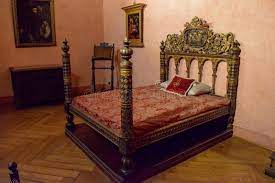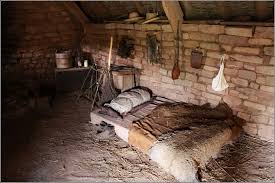Pillow Talk
The Journey of Comfort: Unraveling the Origin of Beds
Introduction:
Beds have been an integral part of human existence for centuries, providing us with a haven of comfort and relaxation. From their humble beginnings to the luxurious and technologically advanced models we have today, the evolution of beds is a fascinating tale that sheds light on the progress of civilization and the importance of a good night’s sleep. In this article, we embark on a journey through time to explore the origin and development of beds.
- Ancient Beginnings:
The concept of a raised sleeping platform can be traced back to ancient civilizations. In Egypt, for instance, beds were elevated to protect people from the cold, damp ground and to keep them safe from crawling insects. Early beds consisted of simple straw or reed mats supported by wooden frames or stone blocks. These beds were rudimentary but laid the foundation for more sophisticated designs to come.

- The Roman Influence:
The Romans made significant contributions to the evolution of beds. They introduced the idea of using mattresses filled with softer materials such as feathers, wool, and even hay. Wealthy Romans enjoyed lavish beds with ornate carvings and inlaid metals, reflecting their social status. Additionally, Romans began using bed frames with slats or ropes to support the mattress, a precursor to the modern box spring.

- Medieval Times:
During the Middle Ages, beds became more elaborate and a symbol of wealth and status. Four-poster beds emerged, providing privacy and protection from drafts. These beds were often adorned with luxurious fabrics, intricate carvings, and curtains. Feather mattresses remained popular, and bedsteads were typically made of wood, featuring intricate designs and craftsmanship.

- Renaissance and Beyond:
The Renaissance period brought a renewed focus on comfort and aesthetics. Beds became more comfortable with the introduction of woven tapestry mattresses and soft, upholstered headboards. Canopy beds gained popularity during this time, often featuring extravagant draperies and decorative details. Bed frames became larger and more ornate, showcasing the opulence of the era.

- Industrial Revolution and Modern Innovations:
The Industrial Revolution marked a significant turning point in the history of beds. Mass production techniques allowed for the creation of standardized bed frames and mattresses. The invention of the coil spring in the 19th century revolutionized mattress design, providing better support and comfort. The introduction of steel frames and the box spring further improved durability and stability.
In the 20th century, advancements in technology and materials led to further innovations in beds. The introduction of adjustable beds allowed for personalized comfort, while memory foam mattresses offered superior pressure relief and body contouring. Today, we have a wide range of beds available, including waterbeds, airbeds, and hybrid models that combine various technologies for optimal sleep experiences.

Conclusion:
The evolution of beds throughout history is a testament to humanity’s pursuit of comfort and better sleep. From the humble raised platforms of ancient civilizations to the luxurious and technologically advanced designs of today, beds have come a long way. As our understanding of sleep and its impact on our health improves, we can expect further advancements in bed technology. So, the next time you settle down for a good night’s sleep, remember the long and fascinating journey that brought you to the comfort of your bed.
